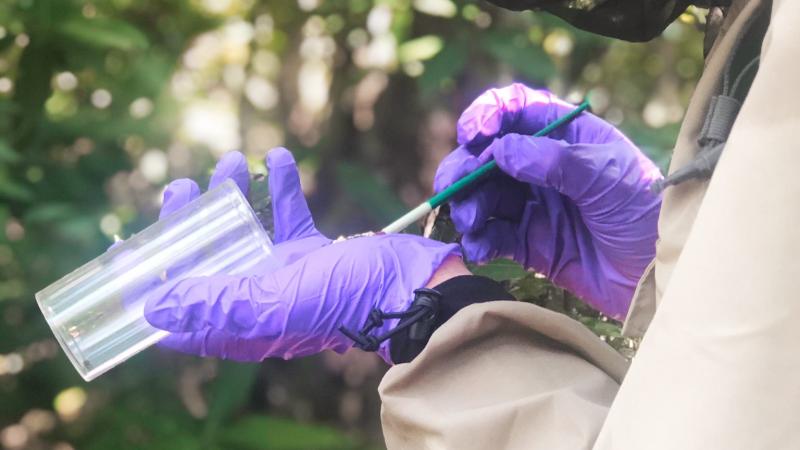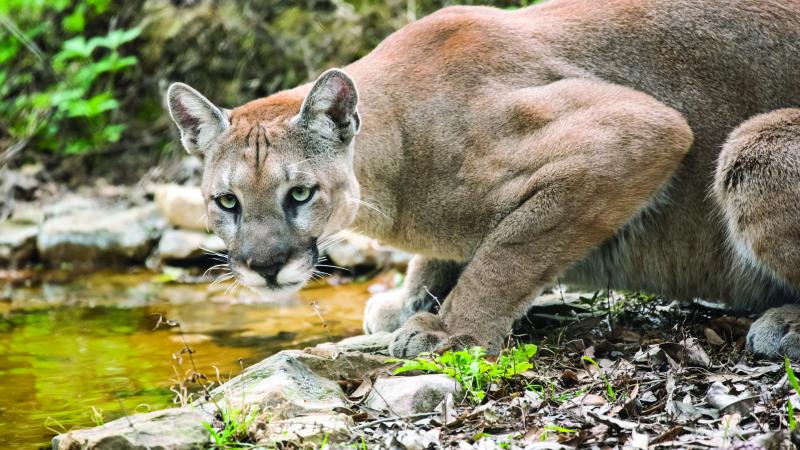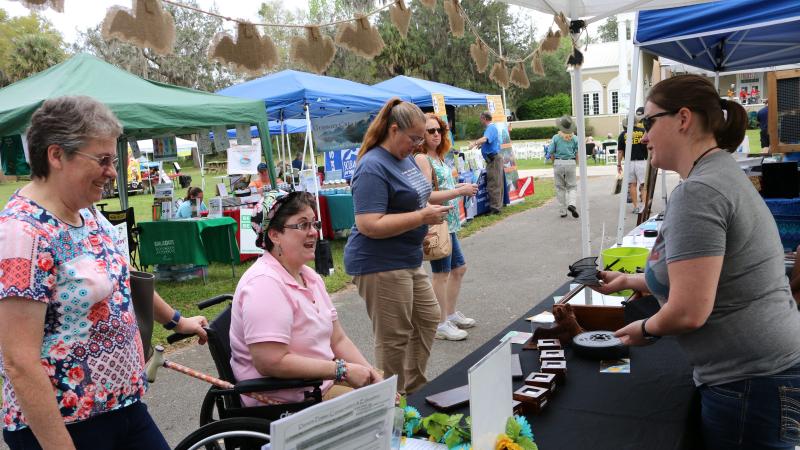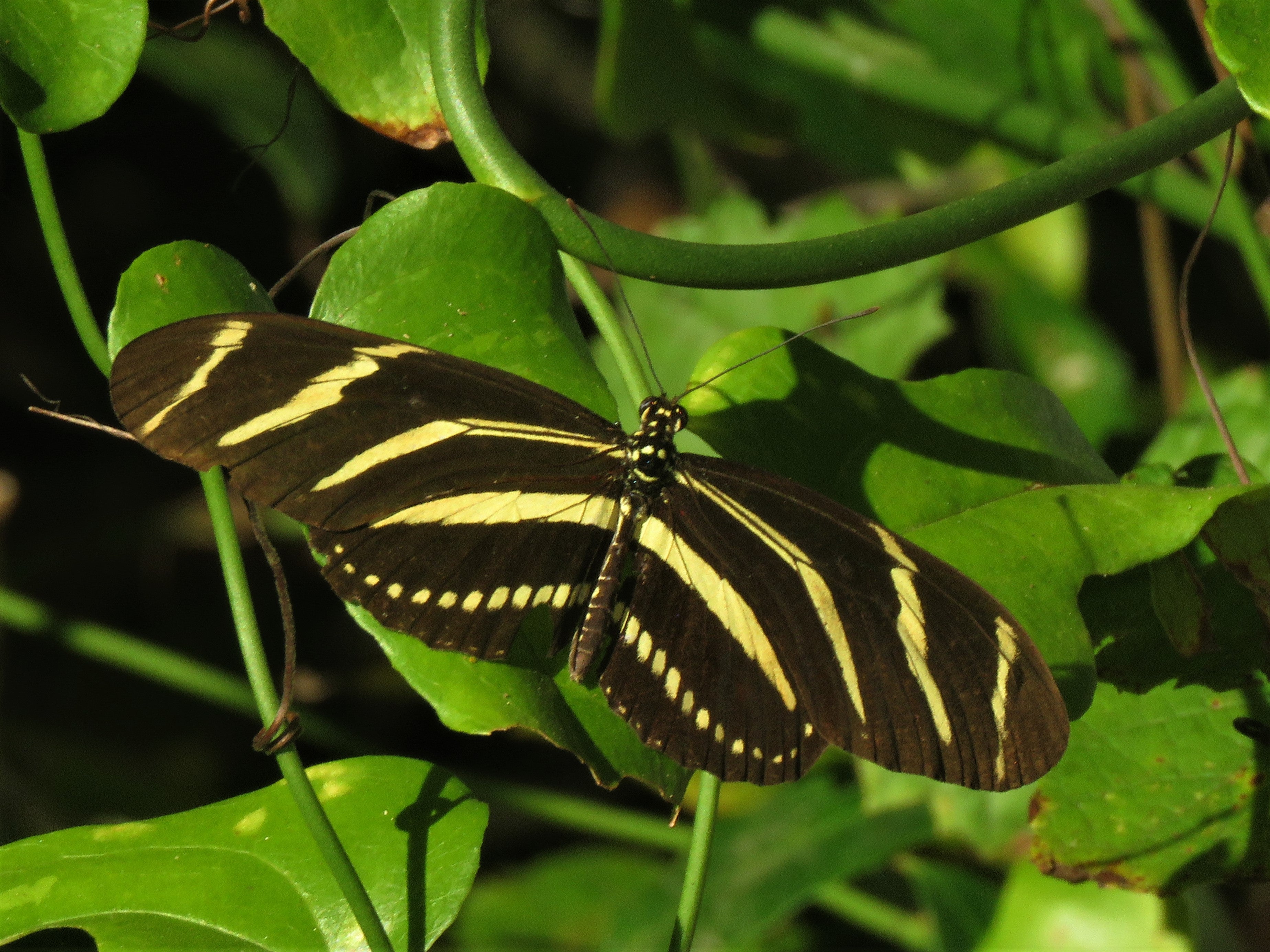
Spotlight on Pollinators
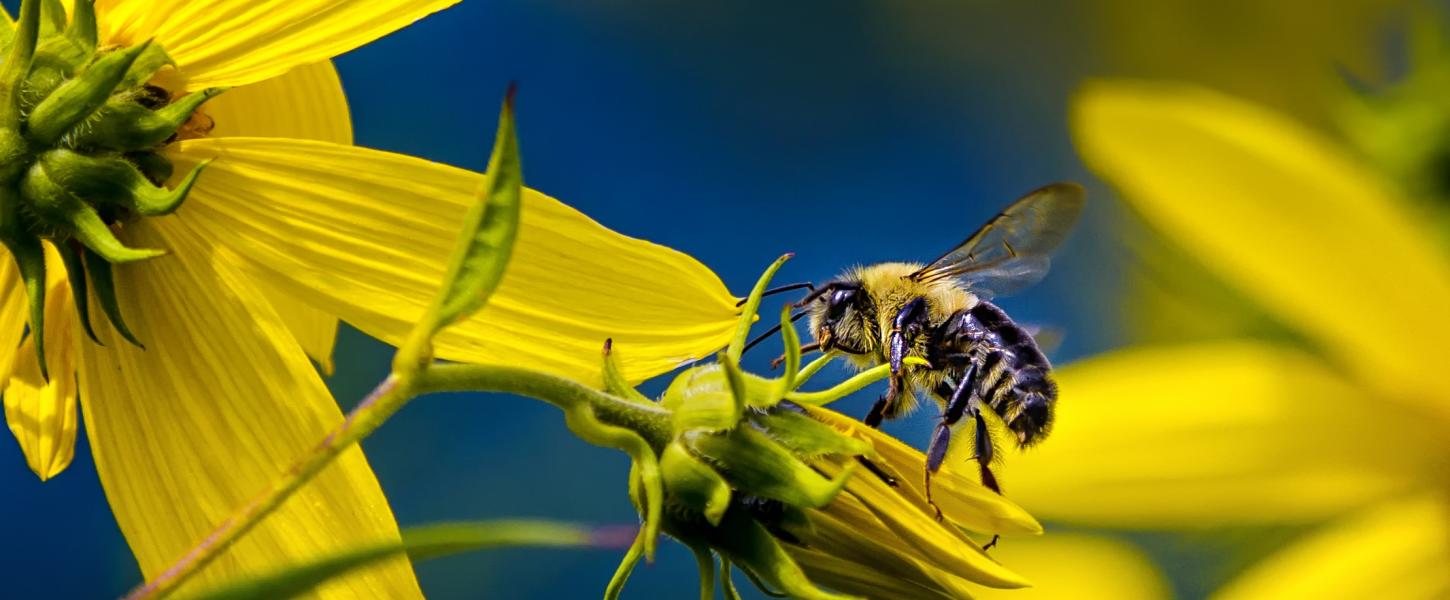
While honeybees may be some of the world’s most famous pollinators, you might be surprised to learn they are not native to America – they were introduced here from Europe. Since then, however, several pollinators have thrived and survived in Florida. Check out these highlighted species.
Bees
Florida has over 300 species of bees, and about 30 of those are endemic – meaning they don’t occur anywhere else in the world. Few of them produce honey, but they still do amazing things for our native plants and ecosystems.
Bumble bees are some of the most efficient pollinators. These friendly bugs are large, fuzzy and social. Look for them slowly buzzing through wildflowers in North and Central Florida. They find abundant flowers and soft soils for nesting along our state trails and in garden parks like Eden Gardens State Park.

You may have accidentally run into carpenter bees if they chose to make their nest in your fence post. These pollinators make a nest by chewing holes in dead wood or conifers like pine and cypress. Although they sometimes fly aggressively to defend their home, they are not known to sting.
Metallic sweat bees are distinguishable by their flashy green coloring. They prefer warm climates and are comfortable near urban settings. John D. MacArthur Beach State Park is home to sweat bees, and park volunteers have helped with citizen science projects looking at seasonal changes in these helpful insects.
Butterflies and Moths
Florida has the highest diversity (number of species) of butterflies of any state east of the Mississippi River. Butterflies and moths are more than just casual pollinators. In fact, their whole life cycle is dependent on access to the right plant or flower.
Florida’s state butterfly is the zebra longwing. Zebra longwings exclusively lay their eggs on passionflower. These plants also provide a safe place where caterpillars can grow and munch. You can find the adults foraging for nectar throughout the state.
Monarch butterflies are iconic beauties. Many species of butterfly can be seen year-round, but monarchs come to Florida to escape cold northern temperatures. You can witness their miraculous migration through late summer and fall at places like Amelia Island State Park, Bald Point State Park and Fanning Springs State Park.
Don’t forget about moths! Although they don’t have the same reputation as their daytime relatives, moths are incredible pollinators. In fact, a recent scientific discovery demonstrated that the giant sphinx moth helps pollinate the incredibly rare ghost orchid at Fakahatchee Strand Preserve State Park.
Birds
Ruby-throated hummingbirds require sugary nectar to keep up their high energy levels. When they drink from their favorite tubular flowers, pollen lands on their head and neck. You’re most likely to see these bejeweled birds from March to October.
This article was published in the Real Florida ℠ Connection, the Florida State Parks e-newsletter. Sign-up to get updates and stories from your state parks the first week of every month.
